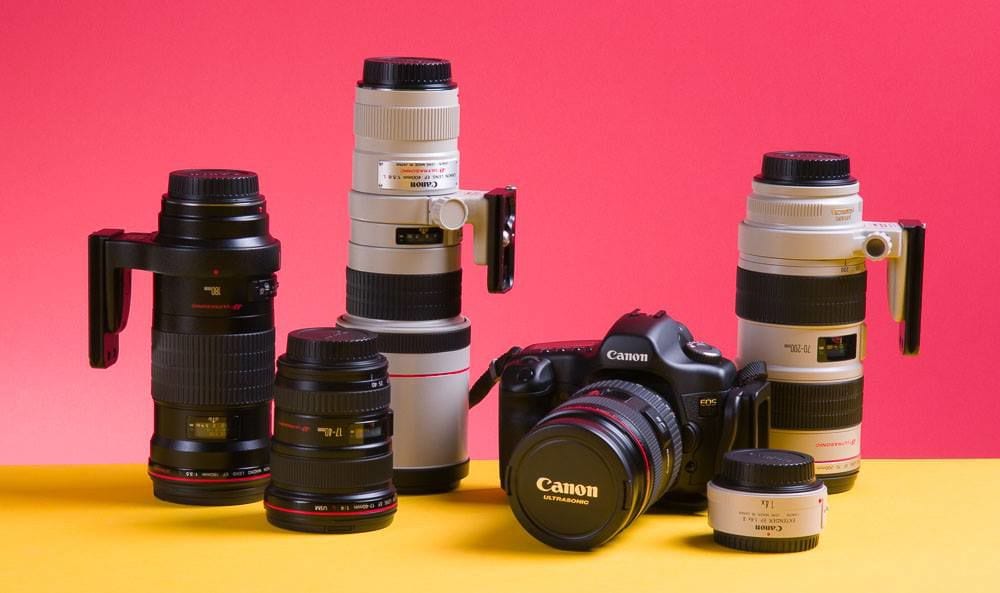
Let’s face it, living in southern Utah puts us smack dab in the middle of photographers’ paradise. Majestic scenery comes into view from every direction. Given the compelling features of modern digital photography, most folks seek out decent cameras (or even smartphones) to build their personal galleries from this wonderland. One would think this is a gold mine for local camera stores. For us, that is hardly the case. We haven’t had a dedicated camera store for a few years. Apparently, that isn’t changing, so how do enthusiasts go about getting the gear they want?
This dilemma can be resolved based on your experience with digital camera technology. Camera enthusiasts, in all likelihood, have already established opinions and preferences. You may have committed to a particular manufacturer’s camera system. You already understand most of the suggestions being presented here. On the other hand, if you are new to choosing a capable camera, there are considerations that will help you get started on the right foot. First pick the camera, then pick the retailer. Yes, in that order folks!
A brick and mortar camera store offers some unique advantages. You get advice. You see and handle possible choices. You have a straightforward way to return equipment. They provide a convenient way to get accessories on the spur of the moment.
Right now, let’s dispel the popular notion that some brands produce better cameras than others. As an experienced photographer, I contend that all of the current major brands of cameras will deliver great results. Canon and Nikon have met their match with Sony, Fuji, Samsung, Olympus, Panasonic, and others that now offer great products. That is where current innovation is coming from. Brandwise, you have a banquet of possibilities. Use this to your advantage.
Being new to the task of choosing a camera, your first task is to classify what sort of camera meets your needs. There are six broad categories of cameras. Choose one before you go any further:
—Smartphones offer the most convenience but the least flexibility.
—Compact point-and-shoot cameras are tops for portability with better results.
—Ultra-zoom point-and-shoots give you a plethora of capabilities, but they are hardly pocketable.
—Digital single lens reflex (DSLR) cameras maximize full-fledged system lens choices for now, but you must commit to bulk and weight, comparatively speaking.
—Interchangeable-lens mirrorless cameras give DSLR features while overcoming DSLR bulk. This is the wave of the future.
—Action cams for the sporting life, dominated by the GoPro design.
To decide on your camera type, you need to do your homework. The best sources for helpful guidance are generalized photo websites, friend’s experiences, and inquisitive observation. How are others feeling about the type of camera they chose? Is there a similarity to your situation? Don’t be too concerned about video; any decent camera available today has video capabilities.
At this point, you need to settle on a budget. How much are you willing to spend? Notice, I said spend, not invest. Cameras, in and of themselves, have quickly eroding residual value. This is because the rate of innovation is staggering. Used camera buyers aren’t impressed with years-old technology unless they are collectors.
Once you have established a camera type and budget, here comes the St. George dilemma. You owe it to yourself to see and handle the choices that qualify. Yes, I mean hands-on. Operational ergonomics have everything to do with your satisfaction. If you don’t cradle a camera in your hands, you are buying blindfolded. I have jumped ship a few times because I ordered a camera based on capabilities, but I failed to evaluate handling. Considering the rapid depreciation, that is a costly mistake.
Where in St. George can we go to see and hold comparable models? Sadly, local camera stores have closed. This is likely the result of competitive big box retailers and online sources. If you have already chosen your camera, they are valid sources but lack the up-close-and-personal sensation of handling the camera at the sales counter.
Nevertheless, there are alternatives. You may want to get a knowledgeable friend to accompany you to Best Buy to narrow things down. Just understand that the comparable choices are very limited. If you can deal with the rehearsed sales practices, it is worth a try. The alternative (and best) method is to visit a full-fledged camera store. Yes, you will be driving to Vegas, L.A., or Salt Lake City, but that’s how things stand at the moment.
Once you have picked out the camera you want, the next step is the purchase. You have several alternatives:
—Local big box stores like Walmart, Costco, or Best Buy. Expect very limited offerings as well as close to no after-sale support.
—Out-of-town brick-and-mortar camera stores. B&C Camera in Vegas comes to mind.
—Major online retailers like Adorama and B&W. They have everything imaginable. If you order over the phone, you will get great guidance for your purchase.
—Consider using an online used camera dealer. KEH is a well-established company that the pros use to buy and sell. You are taking your chances with eBay, even more so with Craigslist (scam central).
—Amazon. Sure, why not? They sell everything. You will get zero personal help, but read the reviews. They provide clues as to what to expect. If you know exactly what you want, this is a reasonable source.
If you needed a purchase plan, these suggestions will point you in the right direction. Be careful, and you will find the camera that brings a smile to your face.




Good things to keep in mind. One thing though, if you’ve gone through the effort to drive to Vegas, LA or SLC to handle a camera to make a decision, I’d strongly recommend buying it there to support the local camera store. If we all go to a brick-and-mortar store to evaluate and then buy online or at a big box store for a couple dollars savings, the brick-and-mortar has less likelihood of being there next time we want to evaluate something. I’m sort of disappointed this wasn’t the first and foremost (or even only) bullet point in the purchase alternatives paragraph.
Hello Harley. I agree with your sentiments completely. Buy local. Let me explain what drove my presentation. About six months ago I walked into a brick and mortar fully stocked camera store within a reasonable driving distance. I had full intentions of purchasing a new, complete, professional quality system, lenses and all. I already knew exactly what I wanted as encountered this equipment in the field on a photographic workshop I was co-leading. I had good old cash money. Everything was in stock. Prices were higher, but I wanted to buy local. The gentleman behind the counter spent about an hour trying to persuade my to buy a different system. I can only assume “spifs” (bonuses) were involved. He wore me down. I left and placed my order on line. So, in good conscience, I left that little nugget of info out of this article. There is really no point trying to disuade considering that mine might be an isolated incident. Certainly, if your brick and mortar experience works well, support the store. I am not your typical customer. I have been in the trade for 40 years. For me, there are facts and then there are opinions. My experience was a waste of my time. Like Ted Kennedy might have said, “We’ll miss that bridge when we come to it.” You make a valid point. Now you know why I didn’t go off that bridge. Peace, brother!